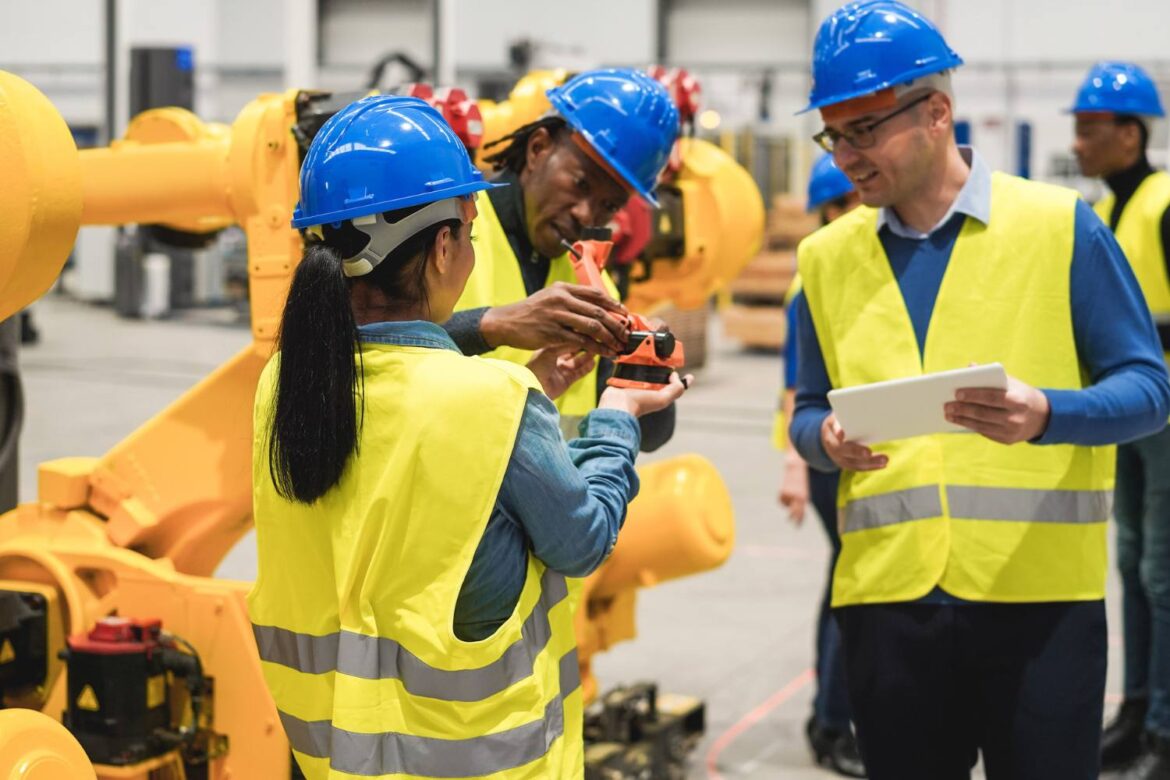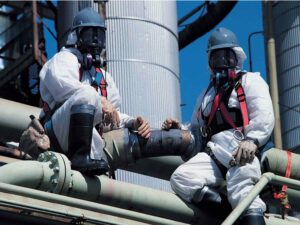
Yes, it’s true, most of us have probably sat through a health and safety training session, dutifully nodded, signed the attendance sheet, and promptly forgotten everything. But health and safety training is much more than a form to fill out or a stamp on a checklist. When approached thoughtfully, it becomes a strategic investment that protects employees, strengthens operations, and even saves businesses money.
At Apex Environmental, our occupational hygiene services prove that training can go beyond mere compliance. We help organisations turn mandatory sessions into empowering experiences where staff leave feeling confident, informed, and ready to tackle real-world hazards — without the glazed eyes and yawns. In South Africa, the law is clear: the OHS Act, General Safety Regulations (GSR), and Mine Health and Safety Act (MHSA, where relevant) make health and safety training a legal obligation. But ticking a compliance box is just the start — doing it right transforms workplaces, saves lives, and keeps businesses running smoothly.
The Legal Necessity of Health and Safety Training in South Africa
The regulatory landscape may seem dense, but the message is simple: employers are legally obliged to ensure the health and safety of everyone on site.
Occupational Health and Safety Act (OHS Act)
The OHS Act requires employers to provide adequate training tailored to the risks employees face. It’s not just about handing out manuals or a short lecture — the law expects active learning that equips staff with the ability to identify hazards, take preventative action, and respond appropriately to incidents. Making health and safety activities a daily habit for staff is what we are after.
General Safety Regulations (GSR) and Mine Health and Safety Act (MHSA)
The GSR specifies workplace safety standards, while the MHSA governs mining operations. Both sets of regulations emphasise proactive risk assessment, hazard identification, and practical training. Non-compliance can lead to hefty fines, operational shutdowns, and reputational damage — not exactly the kind of “investment” anyone wants to make.
The takeaway? Meeting legal requirements is necessary, but it’s only the tip of the iceberg. Organisations that aim higher reap far greater rewards.
The Pitfalls of Generic “Checkbox” Training
Unfortunately, many companies fall into the trap of generic health and safety sessions that barely scratch the surface.
One-Size-Fits-All Doesn’t Fit
Picture this: office staff sitting through a lecture on chemical exposure procedures designed for a chemical plant. Awkward, right? One-size-fits-all training rarely resonates. Tailoring training to your specific environment ensures employees can relate what they learn to their everyday work and genuinely internalise safe practices.
Compliance Without Understanding
Checkbox training creates a false sense of security. A worker may have signed the attendance sheet, but if they don’t actually know what to do when a hazard arises, compliance alone won’t prevent accidents.
Missed Opportunities for Cultural Change
Training is more than memorising procedures. When generic programs fail to inspire, they miss the chance to embed safety into workplace culture. And let’s be honest — a culture of “tick-the-box” compliance is about as exciting as watching paint dry.
The Benefits of Tailored, Industry-Specific Training
Now imagine training that actually clicks — training where employees immediately see the relevance to their work and can apply it confidently. That’s where the real magic happens.
Enhanced Hazard Awareness
Tailored training equips employees to spot risks before they escalate. Whether it’s an unstable ladder, improperly stored chemicals, or subtle signs of fatigue, trained eyes catch what untrained eyes miss.
Improved Operational Continuity
Accidents disrupt operations, sometimes for days. Well-trained teams reduce downtime, meaning projects stay on schedule and budgets don’t spiral out of control. Safe workplaces aren’t just a legal requirement — they’re a business imperative.
Legal Protection and Risk Mitigation
If an incident does occur, evidence of context-specific training demonstrates due diligence. It shows that the organisation took proactive steps to prevent harm, reducing legal exposure and safeguarding reputational capital.
Empowered Employees
Training that feels relevant and practical builds confidence. Empowered employees are more likely to take initiative, follow procedures diligently, and even look out for each other — all while keeping the workplace safe.
Apex Environmental’s Approach to Health and Safety Training
Apex Environmental doesn’t just deliver training; we design transformative learning experiences.
Understanding Your Industry and Risks
Every programme begins with a thorough risk assessment. What hazards exist? Which processes are most vulnerable? By tailoring content to your actual work environment, employees receive training that directly applies to their daily tasks.
Interactive and Contextual Learning
Forget monotonous slides and passive listening. Apex’s approach includes real-world scenarios, role-playing, and practical exercises that engage employees, enhance retention, and make learning memorable — without the cheesy “safety dance” (unless you really want to).
Continuous Improvement
Training isn’t a “one and done” exercise. Refresher courses, follow-ups, and feedback loops ensure safety knowledge is retained, adapted, and reinforced over time.
Proven Client Success Stories
From manufacturing to mining, Apex has helped organisations reduce incidents, increase compliance, and cultivate safety cultures where employees feel valued and empowered. These results aren’t theoretical — they’re measurable, real-world successes.
How Well-Trained Teams Identify Hazards Before They Escalate
High-quality health and safety training doesn’t just react to incidents — it prevents them.
Early Recognition and Reporting
Trained staff recognise hazards before they cause harm. Whether it’s a fraying cable, a chemical spill, or early signs of worker fatigue, early identification prevents small issues from becoming serious incidents.
Creating a Culture of Safety
When employees take ownership of their safety and that of colleagues, it creates a ripple effect. Safety becomes a shared responsibility, rather than a mandate enforced from above.
Reducing Human Error
Human error is inevitable, but well-designed training minimises its impact. Employees understand processes clearly, reducing mistakes that can lead to accidents — and saving everyone a lot of headache (and paperwork).
Evaluating the Effectiveness of Your Current Training
How can you tell if your health and safety training is doing more than just filling a legal obligation?
Measurable Outcomes
Look beyond test scores. Track incident reduction, frequency of hazard reporting, and staff confidence in managing risks. These metrics reveal the true effectiveness of your program.
Employee Feedback
Ask employees what works and what doesn’t. Honest feedback highlights gaps in content or delivery, allowing training to evolve and remain impactful.
Continuous Improvement
The best programmes adapt. As workplace risks change, regulations evolve, or new equipment is introduced, training should evolve in step, keeping employees current and competent.
Making Health and Safety Training a Strategic Investment
Shifting your perspective from compliance to value creation unlocks a world of benefits:
- Financial ROI: Fewer accidents mean lower insurance premiums, reduced downtime, and fewer legal costs.
- Employee Engagement: Confident, capable employees are more engaged and loyal.
- Reputation Management: A strong safety record strengthens client and public trust.
- Resilience: Organisations with proactive safety cultures handle crises better, whether minor incidents or major emergencies.
When approached strategically, health and safety training stops being an administrative headache and starts being a business advantage.
Beyond the Box-Tick
Health and safety training isn’t just a legal formality — it’s a powerful tool for keeping employees safe, operations smooth, and businesses resilient. Apex Environmental proves that compliance is only the starting point. When training is contextualised, interactive, and reinforced over time, it transforms workplaces into environments where safety is second nature.
So, next time someone groans at the thought of another “mandatory” training session, remember: done right, it’s not a box to tick. It’s a lifesaver, a culture builder, and — dare we say — a secret weapon for better business. After all, a safe workplace is a happy workplace, and a happy workplace is a productive one. And if you can teach someone to spot a hazard and smile while doing it, that’s training done brilliantly.








